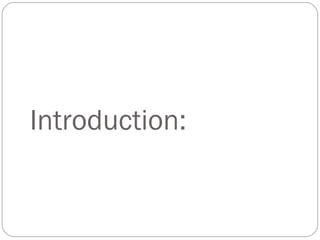Evaluation Criteria
- 2. Evaluating Internet Resources ÔÇß Today, there is a great deal of information to be found on the Internet. Unfortunately, not all of these sources can be considered accurate or reliable. An informational web page is one whose primary purpose is to present factual information. The URL address of many informational sites ends in .edu (education) or .gov (government), many of these pages are sponsored by educational institutions or government agencies.
- 4. Accuracy? ÔÇß Is the information accurate when checked against other sources? ÔÇß How reliable and error-free is the information? Is there evidence of potential bias? ÔÇß Does the author have a specific agenda or point-of- view?
- 6. Authority ÔÇß Is it clear who is sponsoring the web page? ÔÇß Is the sponsor legitimate ÔÇß Is it clear who wrote the page? ÔÇß Are the qualifications of the author clearly stated? ÔÇß Is the author affiliated with an institution or organization? ÔÇß Is there contact information available for the author of the document?
- 8. Content ÔÇß What is the purpose of the web page, i.e. to inform, convince, or sell? ÔÇß What does it contribute to the literature in the field? ÔÇß Who is the intended audience based on content, tone, and style? ÔÇß What is the overall value of the content compared to the range of resources on the topic?
- 10. Coverage ÔÇß Does the site cover the subject adequately? ÔÇß Are there inexplicable omissions?
- 12. Currency ÔÇß Is the publication date clearly stated? ÔÇß When was the page last revised? Is it maintained and updated regularly? ÔÇß Are the links on the page up-to-date and useable?
- 14. Documentation ÔÇß Does the author explain where the information was obtained? ÔÇß Does the web page contain a bibliography or list of sources used?














